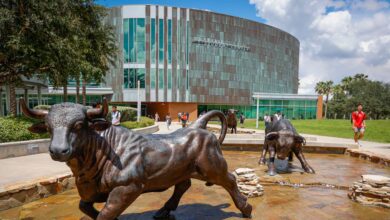Lost Treasure Found Off The Coast of Florida from 1715 Spanish Fleet

The Hunt Begins: Tracing the Lost 1715 Fleet Through Time
In the summer of 1715, Spain’s great “Plate Fleet”—a convoy laden with silver, gold, and colonial riches—set sail from Havana, destined for the mother country. The fleet was comprised of two joined flotillas—the New Spain and Tierra Firme fleets—carrying years’ worth of accumulated treasure from across Spanish America: coins, jewelry, ingots, porcelains, and luxury goods. On July 31, just days into their voyage, a ferocious hurricane struck off the east coast of Florida, driving the ships into shoals and lethal seas. Eleven of the twelve vessels sank, scattering their cargoes across more than 50 miles of the ocean floor. Estimates suggest over 1,500 sailors perished in the wrecks.
For centuries, local lore, fragmentary maps, and sporadic finds of coins washing ashore kept the story alive. Over time, treasure hunters, maritime archaeologists, and dedicated historians began piecing together clues: shipping logs, underwriting records, Spanish royal correspondence, and colonial manifests. Some of the wrecks were located by matching underwater topography to centuries-old charts; others were inferred by tracing currents, sediment shifts, and artifact scatter patterns.
In the 1960s, treasure seeker Kip Wagner and his team made important inroads in recovering pieces of the fleet, publishing Pieces of Eight and helping spark public fascination with the “Treasure Coast.” In later decades, famed treasure hunter Mel Fisher’s legacy extended to the 1715 searches, and his teams helped map and verify wreck fields.

Over time, the remains of the fleet were reconstituted in modern times as a patchwork of documented sites, artifact scatter zones, and salvage-authorized areas. The state of Florida, in partnership with licensed salvors such as 1715 Fleet – Queens Jewels, LLC, maintains strict oversight and permitting protocols to balance recovery, historical conservation, and public interest.
Thus began the modern era of treasure reawakening: combining archival detective work, underwater survey technology, magnetometers, remote sensing, and diver teams to revisit known wreck zones and chase new leads.





The Discovery: Over 1,000 Coins Recovered, A Million-Dollar Haul
In the 2025 summer salvage season, the team aboard the M/V Just Right, led by Captain Levin Shavers and the crew of 1715 Fleet – Queens Jewels, made a breakthrough: the recovery of over 1,000 silver coins (reales) and five gold escudos, along with other rare gold artifacts, from one of the 1715 fleet wreck zones. According to the official announcement, these artifacts are believed to have been part of a single chest or cargo spill from a now-fragmented ship.
The estimated value of the find is roughly USD 1 million, a remarkable sum for a single recovery season. Some of the coins remain in excellent condition: mint marks and dates are still legible, offering numismatic insight into their places of origin—colonial mints in Mexico, Peru, Bolivia, among others.
Because Florida law assigns ownership of recovered artifacts to the state, the salvage arrangement stipulates that licensed teams may retain a share (commonly 80 %) while 20 % goes to the state for conservation and eventual public display. After painstaking documentation, stabilization, and cleaning, the finds are slated for rotation through local museums for educational and cultural exhibits.

To the salvors and archaeologists, each coin is more than a precious metal: it is a time capsule. As Sal Guttuso, Director of Operations for 1715 Fleet – Queens Jewels, noted:
“Each coin is a piece of history, a tangible link to the people who lived, worked, and sailed during the Golden Age of the Spanish Empire.”
Some of the recovered pieces were likely expelled when a ship’s hull ruptured, then rapidly buried by shifting sands—effectively preserving them from centuries of corrosion and disturbance.
While earlier salvage operations had captured portions of the fleet’s wealth—most famously in 2015, when more than USD 4.5 million in gold coins were found near the Corrigans wreck zone—this 2025 recovery underscores that secrets still lie waiting beneath the waves.
The Team & the Legacy: Bringing Florida’s Past Back to Life
Behind every recovered artifact is a network of specialists: marine archaeologists, conservationists, underwater surveyors, licensing legal teams, vessel crews, and historical researchers. The success of any expedition depends as much on archival sleuthing—identifying ship logs, port manifests, colonial maps, and personal accounts—as on sonar sweeps and diver skill.
In the case of the 1715 fleet, historians have long traced the fleet’s voyage, its departure from Havana on July 24, 1715, and the interception of a brewing hurricane hours later. From there, matching wind and current projections, sediment drift models, and archival dispatches allowed teams to bracket likely wreck zones along Florida’s central east coast, an area now known as the “Treasure Coast.”
The Florida coastline itself absorbs the story: scars of colonial struggle, piracy, salvage wars, and maritime ambition. Some vessels, like the flagship Urca de Lima, were partially salvaged soon after the disaster, deliberately burnt to mask their locations from bidders. Over time, opportunistic salvage, pirate raids, shifting sands, and human interference scattered and obscured the fleet’s trail.
By layering modern tech over centuries of historical trace, the current generation of explorers is bridging the gap between past and present. Each coin pulled from the sea floor is a voice speaking across three centuries—of Spanish intrigue, colonial economy, and the perils of maritime life.
For Florida, this discovery is more than a treasure story. It reaffirms the state’s uniquely deep connection to colonial heritage, nautical drama, and cultural identity. The recovered artifacts will educate museum visitors, inspire scholarship, and anchor local historical narratives in tangible heritage.
As exploration continues, other wreck zones remain under study—and perhaps more treasure lies dormant, waiting for the right combination of research, expedition, and preservation to bring it home.




